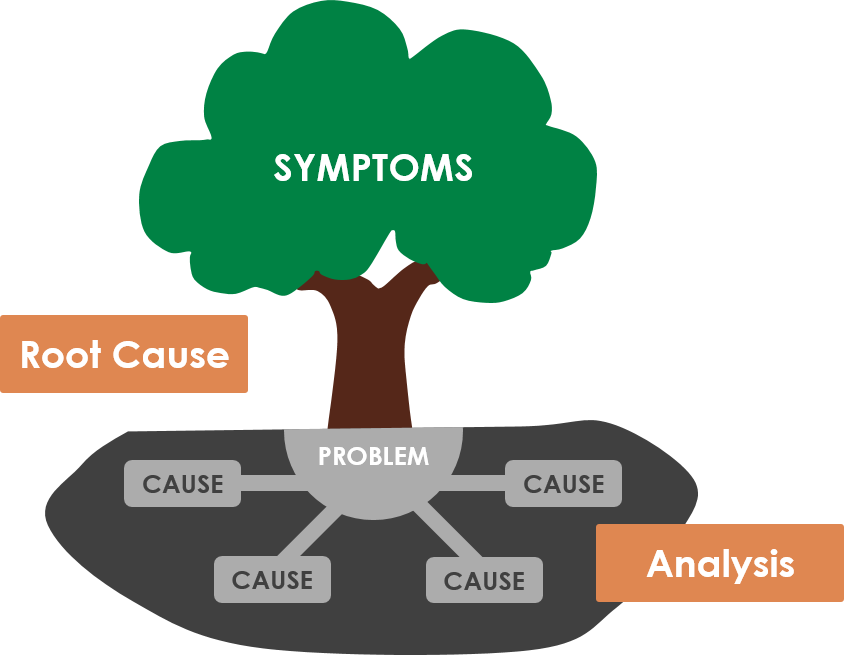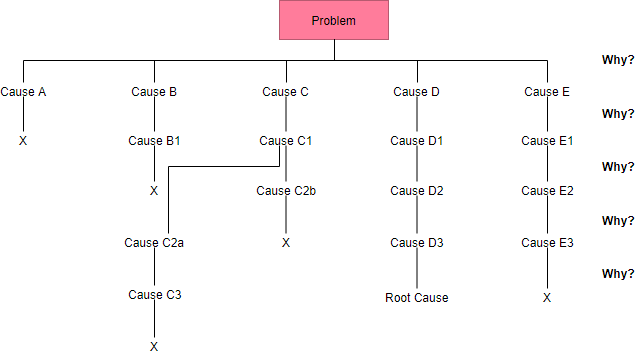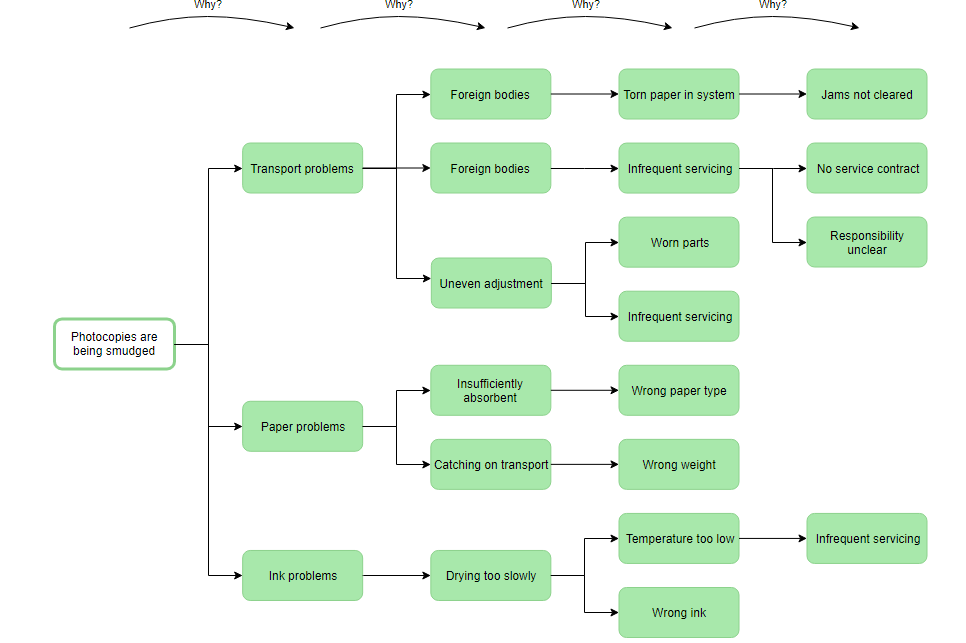The Why-Why Diagram helps to identify the root causes of a problem by narrowing down and eliminate possible causes, ideally to one or more addressable root causes. The why-why similar to tree diagram is an appropriate structure for practicing multiple 5 whys analysis all in one diagram. In other words, the why-why diagram is a graphic communication tool, to explain to others the many causes of a problem.

Symptoms vs Root Cause
When you’re resolving a problem, it’s important to understand the difference between a cause and a symptom. A “symptom” is an indicator or a sign that a problem exists. For instance, if your team has low morale, it is a sign of a problem. Low morale doesn’t happen by itself and it is a symptom or the root cause? The underlying problem may be heavy overtime, lack of communication, poor management, etc. In other words, when you resolve an issue, you must address the cause of the problem, not a related symptom. This final cause can be referred to as the “root cause.”
Four Steps for Creating Why-Why Diagram
- Develop a statement of the specific problem whose cause you are seeking. Write it on the root of the tree-like why-why diagram.
- Ask “Why?” this problem does or could occur. List all these causes and place them on the second level of the hierarchy immediately under the problem of the tree structure.
- Each of the cause statements now becomes a new problem statement. Again ask “Why?” Sometimes the question needs to be phrased, “Why does this situation cause the problem?” Create the next level of cause statements. Show the relationships to the second level of causes with arrows.
- Continue to turn each cause into a problem and ask “Why?” Do not stop until you reach the root cause (not symptoms appeared in the upper levels.
Why-Why Diagram Template
A Why-Why Diagram is a Tree Diagram where each child statement is determined simply by asking ‘why’ the parent occurs, as below. It may be structured as a vertical (as shown in the Figure below) or horizontal tree structure (as shown in the photocopier example).
It is thus very similar in use to tree Diagram, and analysis techniques may be borrowed from 5 whys analysis usage. Its simplicity can make it useful in less formal situations.
Note That: The Why-Why and How-How Diagrams together make a very simple toolset for finding causes of and solutions to problems.

Edit this Root-Cause Analysis Tree Example
Why-Why Analysis Example – Photocopier Smudging Problem
A particular model of photocopier is reported to be having smudged in the printout which can be caused by multiple possible reasons. To troubleshoot the problem, the quality assurance team decide to perform a root cause analysis using a why-why diagram:
